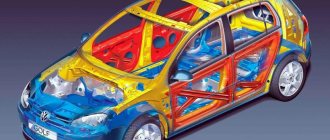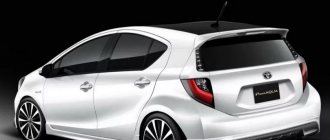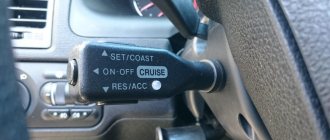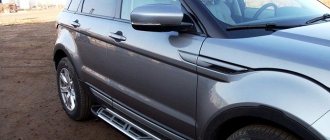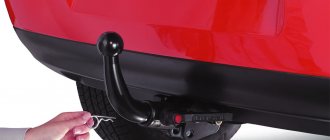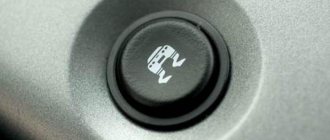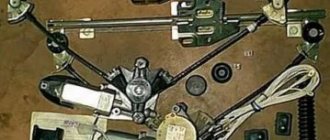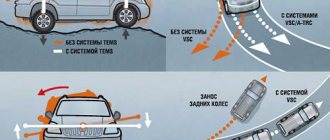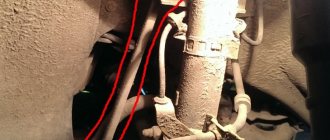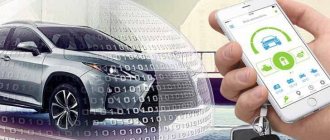More recently, stricter amendments to the Traffic Rules regarding the safety of small passengers while driving a passenger car were adopted.
The number of accidents where children were injured in one way or another is only increasing every year, so our legislators approached this issue with maximalist demands both to the parents themselves and to the drivers transporting children, including children.
Perhaps many people know that children need to be transported in cars in car seats, but not every parent knows about the correct, and most importantly, safe fastening of the baby in the car.
Recently, many fastening restraint devices have appeared on the car accessories market that allow you to safely transport children in cars. Our conversation is dedicated to the popular ISOFIX fastening, which recently appeared on store shelves.
Description of the Isofix fastening system
The Isofix fastening system is a universal means of installing a car seat and securing a child in it. It is reliable and simple. Easy to install in the car. Eliminates incorrect operation. The system is suitable for children weighing up to 18 kg. Therefore, it is installed on chairs of groups from 0 to 1.
What it looks like (photo)
Most often the device is included in the base of the seat. But for carrycots, the Isofix base for the car seat is purchased separately. Some of the elements are located directly in the car interior. The device has an indicator that shows whether it is secured or not. Inside, the seat is equipped with a five-point seat belt, less often with a three-point one.
Design Features
Isofix consists of 2 parts. The first is the brackets located at the bottom of the child seat. The other is 2 metal brackets located in the body. These connectors are located at a distance from each other under the back of the rear seat, less often - under all passenger seats.
Isofix secures the seat at 2 points, which does not provide complete safety in the event of an accident.
A large load causes the fastenings to fail, and the top of the chair suddenly moves forward. To avoid this, use a third fulcrum. This is an “anchor fastener” or “downward thrust”.
There are models without a third support point, where the design of the brackets is mobile, due to which the load is distributed evenly. But such a device is only suitable for a few car brands. In addition, without an additional support point, car seats are produced with a fixing table, which is located instead of a five-point belt.
Location in the car
Isofix brackets are located between the seat and backrest of the rear seat. To find them, you need to move the upholstery a little. Sometimes you have to stick your hand deeper, because... they are drowning inside. Mounting points are usually marked with the inscription Isofix and/or the image of a cradle.
The connectors must be connected to the car body, so they are mounted on the rear seats.
Sometimes the device is found in the front place. But it is not connected to the body, so it does not provide complete safety.
Where is it located in the chair?
In car seats, the Isofix child restraint system is located on different sides. Therefore, before purchasing, be sure to consider how the device will be placed inside the car. In addition to the 2 main mounting points, some models contain an additional “anchor” or “downward” fastening element.
What is Isofix
Content:
- Isofix: what is it?
- Where to look for Isofix in your car?
- Benefits of Isofix
- Isofix features for group “0”, “0+”, “1”
- Features of Isofix for group “2”, “3”
- What is important to know about Isofix!
- Instructions for installing a car seat with built-in Isofix
- Instructions for installing a car seat with a base
Isofix is an international standard child car seat fastening system. Introduced by the ISO International Institute in 1990 (standard number: ISO 13216). Hence the name: ISO stands for International Standards Organization, and fix translates as “fastening”, “fixing”.
Isofix allows you to quickly and, most importantly, reliably install a child restraint system in your car. The mount consists of two autonomous parts. The first is metal brackets in the body structure (under the back of the rear seats), the second is metal retractable brackets at the bottom of the child seat. To install the chair, you need to connect these two parts together, that is, insert the latches on the brackets into the brackets.
Where to look for Isofix in your car?
If you are planning to purchase an Isofix restraint system for your baby, check whether your car has brackets for securing it. You need to look for them in the gap between the backrest and the seat of the rear seats. In some cars you can easily find the staples by just slightly pulling apart the upholstery, in others you will have to stick your hand deeper, as they may be “recessed” inside.
What to do if you don't find Isofix mounts in your car?
Firstly
, it is recommended to call the service center and find out whether the car’s design includes the Isofix system. Perhaps you just didn't notice it.
Secondly
, Isofix may be absent in principle, which happens even in modern models. In this case, you can consider child car seats with a standard type of fastening.
Third
, if Isofix is not provided in the car, but you basically want to use it, you can contact a car service. Specialists will install the brackets into the car body.
A group “1” car seat (9-18 kg) can also be placed on any passenger seat. The design of the product allows it to be installed in both directions of travel, but most parents prefer to transport their children facing forward.
A group “2” car seat (15-25 kg) is located exclusively in the direction of travel on any passenger seat. The internal belts of the car seat are replaced by a regular car seat belt, which secures the child.
Advantages of Isofix
Easily and quickly attaches to the car interior. Installing the car seat takes just a few seconds. You don't have to constantly fiddle with the belt, passing it through all the slots.
The likelihood of incorrect installation is minimized. More than 70% of child seats with a standard type of fastening are installed with gross errors! It is almost impossible to fix a chair with Isofix incorrectly. All you need to do is guide the brackets onto the metal brackets and snap the locks into place.
Reliable child protection in case of an accident. Today, a car seat with Isofix is considered the safest option for transporting a child, which is confirmed by independent crash tests.
The seat is installed rigidly, it does not “move” forward and does not move around the cabin. Regular seat belts can become loose while driving, especially if the child seat is fastened hastily. Using Isofix, you can be sure that the car seat will not move out of place. It will not “jump” around the cabin if you often drive without your baby, but do not remove his seat from the car.
Instructions for installing a car seat with built-in Isofix
Step 1.
Locate the metal brackets at the junction between the backrest and the seat. Remove the plugs from them (if any). Some car seat models include bracket guides that attach to the brackets and make installation easier.
Step 2.
Pull out the car seat brackets. They may also have plugs that need to be removed! and snap them onto the brackets. Place the plugs immediately in the glove compartment so they don’t get lost in the car.
Step 3.
Adjust the anchor strap Place it over the back of the rear seat and fasten it to the loop located either on the trunk floor or on the back of the seat.
Step 4.
Place your child in the seat. Tighten and secure the internal five-point harness.
Instructions for installing a car seat with a base
Step 1:
Locate the metal brackets at the junction between the backrest and the seat.
Remove the plugs from them (if any). Step 2:
Place the base on the seat. To extend the mounts, use the button on the front of the base. Align the base mounts with the Isofix mounts in your vehicle. If the system has worked, green indicators will appear.
Step. 3.
Move the base as close as possible to the back of the seat.
Step 4.
Adjust the additional stop to the floor. Press the button on the stop leg and select the desired length. If you did everything correctly, the green indicators will light up.
Step 5.
Place the car seat on the base, aligning the fasteners until it clicks. Green indicators will allow you to make sure that the chair is truly securely fastened. Remember that the car seat is placed exclusively against the direction of travel of the car.
Step 6.
Place your child in a seat and secure the internal five-point harness.
To remove the car seat, use a special lever (most often it is located behind the back of the seat).
Groups "0", "0+", "1"
As the main method of fastening, Isofix can be used to transport children weighing up to 18 kg (up to approximately 4 years), which corresponds to groups “0”, “0+”, “1”. This rule is strictly regulated by the ECE R44/04 safety standard. The fact is that in the event of an accident, the Isofix mount bears a huge load, or rather, it takes on the entire force of the impact, so the weight of the child is a fundamental factor.
Group “0+” (up to 13 kg) are infant carriers that are installed rear-facing. They do not have built-in Isofix, so special bases are used. And this is quite convenient, since you can take the cradle with your baby out of the car at any time, just by pressing a button or pulling the handle. But there is also a fly in the ointment here. A car seat with Isofix is an expensive pleasure. The chair itself costs an order of magnitude more than standard models, plus you will have to pay about the same for the base. When a child grows out of the 0+ group, in most cases you will not be able to use the base with another chair (even from the same manufacturer). The exception is rare models.
In group “1” car seats (9-18 kg), Isofix brackets can be built into the base of the product itself, but bases are also used.
In models of the combined type of group 0+/1, the Isofix system is often built into the base of the car seat. Please note that child seats in this group can be installed both in the direction of travel and against the direction of travel. Therefore, some manufacturers make the bowl rotating so that, if necessary, you can change the direction of installation.
Groups "2", "3"
As noted above, the Isofix system has a weight limit of 18 kg. Car seats of groups “2”, “3” are intended for children from 3 years old weighing 15-36 kg. Isofix in these models can only be an additional method of fastening (not the main one!). And it cannot be said that in groups “2” and “3” Isofix is used in its pure form. We are talking about its modifications, which is why such fastening systems are called differently: Kidfix, Isofit, Smartfix, etc. They allow you to provide additional safety for the child, as well as secure the child seat so that it does not “ride” around the cabin. In the seat, the small passenger is also fastened with a standard seat belt using special guide marks. It is the three-point belt that bears the entire load in the event of an accident. It is important that the restraint system has relative mobility, allowing it to move with the child until the three-point belt operates. Thanks to this, the baby is provided with side protection and the seat belt is routed correctly. That is, the “correct” Isofix with a rigid fastening of the car seat in combination with a standard belt is inappropriate, as well as an anchor belt or a persistent “leg”.
Conclusion: for groups “2”, “3” systems are used that are similar in principle to Isofix installation, but modified to meet the safety requirements for models of these age groups and are compatible with the standard seat belt. Namely: they shift, unfasten or move forward when loaded.
"Anchor" belt and telescopic stop
Isofix fixes the chair at 2 points on the same axis.
In the event of an accident, this axle is subject to enormous loads, like all fastenings of the system. There is a danger that the upper part of the chair may suddenly move forward, and the fastenings may not hold up. Therefore, it is recommended to use a third support point to reduce the load on the restraint mountings. The third support point can be: Telescopic retractable stop at the floor.
It consists of two connected tubes located at the base of the holding device platform, which are height-adjustable and rest against the floor. The persistent “leg” prevents the chair from rotating and also reduces the load on the brackets.
Top Tether anchor strap.
It is located at the top of the car seat at the back, and has a carabiner-type fastening at the end. The carabiner must be secured to a special bracket. It can be located either in the trunk or on the back side of the rear seat of the car. Top Tether secures the top of the car seat, protecting the little passenger from a sudden “bounce” during a collision, which can lead to neck injuries.
Note! There are several models where it is possible to use Isofix without a 3rd point of support. The design of the guides in them is movable, which makes it possible to evenly distribute the load.
These car seats are not universal. A list of car models compatible with them is usually attached to the instructions or can be checked with a specialist.
A third support point is also not required in cases where a fixing table is provided instead of an internal five-point belt.
What is the safest place in the car?
There is no consensus on this matter. For a long time, the seat on the left (behind the driver) was the “favorite” among safety experts. This choice is explained by the human instinct of self-preservation: in an emergency situation, the driver unconsciously turns the steering wheel in such a way as to protect himself, which means that the passenger behind also benefits.
However, scientists from the American Research University at Buffalo called the middle seat the safest place in a car. According to researchers who analyzed traffic accident statistics in New York State for 3 years, compared to the front seat, the rear seats are 60-86% safer, while the safety of the middle seat is 25% higher than that of the outboard rear seats. The researchers explained this by the fact that during a collision it is not subject to compression, which cannot be said about the “sidewalls”.
The foreign publication Pediatrics also conducted its own investigation on this issue. Published results indicate that over 50% of childhood injuries and deaths in road traffic accidents could be avoided if the car seat was installed in the rear seat of the car instead of the front seat.
As you can see, a car seat in the front seat is far from the safest way to transport a child. We objectively talked about all its advantages and disadvantages. The choice is up to the parents!
Caring parents!
In the comments you can share your own experience or ask your questions on this topic.
Together we make the world safe and comfortable.
Child safety expert
Which cars have Isofix?
Since 2006, Isofix fastenings have been installed in the basic configuration of cars. Since 2011, they have become a mandatory element for all cars produced and sold in the European Union.
The Russian auto industry has also recently been installing fasteners of international standard. They are present in cars produced later than 2011. For example, in Lada Granta, Lada Kalina cars.
Before purchasing a seat with Isofix, make sure that the mounting brackets are present in the car interior. They may not be indicated by a special sign or inscription, especially if the casing has been changed.
Check their presence by running your hand at the junction of the backrest and seat in the rear seat of the car. If necessary, remove decorative elements from the chair.
What to do if there is no fastening
For cars without Isofix mounting, you should purchase a car seat with standard fixation. But if you still want to use Isofix, contact a car service. The craftsmen will install the brackets into the car body. If necessary, they can also install mounts in the front seat.
Let's dispel some misconceptions about Isofix:
- The first and most common misconception is “Isofix car seats are safer.”
I think many people already understand from the article that for groups 0+ and 1 this is true, but for other groups it is not so. For them, Isofix does not bear any safety burden.
Of course, group 0+ and 1 seats with Isofix show high results in crash tests, although there are exceptions. And we must not forget that the quality of safety depends not only on the use of this system, but also on a number of other qualities inherent in the car seat, which can provide additional protection.
- The second misconception is that some believe that Isofix is more dangerous due to its rigid fastening than fastening a car with a seat belt, since the belt does not operate abruptly and can stretch a little, therefore, there is less load on the child.
Many tests have been carried out on this matter and they show absolutely the opposite result. Therefore this is a big misconception.
Here I also want to add that if the seat has a good belt tensioner, then the seat shows better results in tests, since there is less load on the child.
Pros and cons of car seat anchors
The Isofix car seat is a popular restraint system due to its reliability and easy installation.
The system has the following advantages:
- The design is installed simply and quickly. The belts do not have to be threaded through a large number of connectors, as in car seats with traditional anchorages.
- Isofix is easy to attach correctly. Devices with standard mountings are difficult to install. Therefore, more than 70% of such chairs are installed with gross violations.
- Effective protection against injury in road accidents. Numerous crash tests have shown that Isofix provides the safest transport for children.
- Rigid installation of the chair. The device is securely fixed in one place and does not move around the car interior, even if you drive without a child. No need to remove the seat.
- Minimum load on the child's neck.
- The indicator allows you to monitor whether the latch is actuated.
Despite the uniform fastening standard, it is not always suitable for the car model. In addition, Isofix is only suitable for children weighing up to 18 kg. Cradle chairs do not have a built-in Isofix system. You will need to separately purchase a base, the price of which is equal to the cost of the chair itself.
The base is only suitable for one model of car cradle. It is not compatible with other devices, even from the same company, with the exception of rare designs. The brackets must be fastened carefully, because... sharp points may accidentally scratch or tear the upholstery.
Disadvantages and Limitations
Despite the good characteristics of the ISOFIX system, it also has its negative sides:
- The main difference between such car seats is that they are overweight; they are about a third heavier than a regular child seat. This must be taken into account if you are going, for example, to the country, and the car will be full.
- All car seats equipped with the ISOFIX safety system are very expensive, their price exceeds 50% of the cost of an ordinary child seat. And not every parent can afford this luxury.
- And limiting the child’s weight is also important. The restraint system can be useful and fully ensures reliability only if the child weighs no more than 18 kg, since in a collision the main load falls on the fasteners, and it may not withstand a larger passenger weight.
- You can also highlight the lack of versatility of seats with such equipment installed - adjusting the position of the car seat in the back seat to suit the child’s needs (for example, extending it to give it a lying position) can sometimes be very difficult.
These car seats are best suited for younger children, so it is advisable to use them if your child is between 0 and 5 years old.
Installing a chair using the Isofix system
To install an Isofix car seat, determine where the brackets are located in the car seat. Remove the plugs, if any. Pull out the chair arms. Remove the caps here too. Insert the brackets into the connectors. It will click and the indicator will turn green. Secure an additional anchor point.
"Emphasis down"
The chair contains a special support that extends and is installed in the floor of the car. Due to it, the device will not roll over in a collision. This installation method is reliable and versatile. Not every car brand is equipped with an anchor mount, and the anchor can be purchased separately and adjusted to the height of the seat.
"Fastener-anchor"
Located at the top rear of the chair. The end is equipped with a carbine mount. It must be secured to a bracket located in the trunk or on the back of the rear seat of the car. You can find this place by a special anchor icon. The anchor fastening secures the top of the seat, which prevents the passenger from sharply tilting forward during a collision.
After installation, place the child in the chair and secure it with the internal straps. For more details on how to install the Isofix system, see the photo.
What is an Isofix mount and what does it look like?
The name is a combination of several concepts. The first syllable is an abbreviation of the name of the European standard ISO (in full “International Standards Organization” or international standardization organization). The second is an abbreviation for the English “fixation” - fixation.
The mechanism consists of two rigid brackets with latches. Fastening occurs automatically, detachment using a button located at the base of the bracket.
The fact of engagement is confirmed by a characteristic click. In addition, additional confirmation is provided in the form of a change in the red curtain indicator window to green.
Reliable connection of the latches with the car body is ensured by two steel brackets. On most new cars, this is part of the body itself, mounted to the power frame during assembly. It is also possible to install the brackets as a separate element, for which holes are left for the mounting bolts.
Features of use for different chairs
Categories of car seats are divided not by age and height, but by weight. They produce combined models that transform and are suitable for several weight categories at once. The instructions for the device indicate the weight and approximate age of children for whom the chair is suitable.
Weight restrictions
Isofix is not suitable for children weighing more than 18 kg. The weight of the car seat itself should be no more than 15 kg. Only in these cases does the system completely absorb the impact force in an accident and provide the necessary safety. The fasteners may not be able to cope with a large weight.
If the passenger weighs more than 18 kg, Isofix can be used additionally to simplify the installation of the seat and secure it. But other fastenings should be selected as the main security system.
Cradle chairs 0 and 0+
0 - infant carrier for newborns and children weighing up to 10 kg, up to about one year old. The device is fixed in a horizontal lying position. It can be detached and used separately as a classic carrycot. Inside there is a soft wide fixing belt and additional protection for the newborn's head.
0+ - suitable for children weighing up to 13 kg, aged from 0 to approximately 1.5 years. The device is installed against the direction of travel. The child is positioned in a semi-lying position.
For groups 0, 0+ there is no built-in Isofix. A special base is used for them, thanks to which you can quickly remove the cradle from the car.
Group 0+/1 is a swivel car seat that can be placed both against and in the direction of travel. It transforms depending on the age of the child and is suitable for passengers weighing up to 18 kg. Isofix is already built into the base of the chair.
Category 1 with seat belts
Suitable for children weighing from 9 to 18 kg (approximate age 1-4 years, height above 78 cm). This model is suitable for a child who already confidently crawls and stands, and begins to walk. Children are fastened with a five-point seat belt. The brackets are mounted into the base of the chair; sometimes there are separate bases. The child rides facing forward.
Group of seats 2-3 (boosters)
Isofix cannot be installed in category 2, 3 car seats or booster seats. The device can be used for additional safety and to simplify installation of the seat in the car. It will securely fix the chair when you do not need to transport the child.
These categories have features:
- Group 2 is suitable for children from 15 to 25 kg, 3-7 years old. The device is equipped with an adjustable backrest and a standard seat belt.
- The combined 2/3 transforming model is used for children from 3-4 years old and weighing from 15 to 36 kg. The backrest is adjustable and removable to turn the device into a booster.
- A category 3 car seat or booster is a seat without a backrest in which the child is secured with standard seat belts. Suitable for children over 7 years old and weighing from 22 kg.
Mobile restraint devices are chosen for the booster. An Isofit mount would be a suitable option. It is designed for older children. Its locks only hold the weight of the seat, and the child is secured by a three-point belt that goes over the top.
If your car doesn't have isofix
If the car is not equipped with isofix child seats, you can still install the brackets yourself or at a car repair shop. To do this, you need to purchase a set of appropriate spare parts, which includes a strip with brackets, mounting bolts and nuts.
Seats equipped with Isofix can be secured with standard seat belts. For this purpose, special guides are installed on their frame. They are usually a different color from the rest of the set for ease of use.
Obviously, there is no point in purchasing Isofix chairs and then securing them with belts. But this opportunity will be useful if for some reason you are traveling with your baby in someone else’s car. For example - taxi.
Where do you buy chairs with Isofix?
You should buy children's car seats only in specialized stores that are responsible for the quality of the product. The device must have a certificate. It proves a high level of security. Before purchasing, be sure to check that the car has this mounting system.
Features of choice
When choosing a car seat, make sure that its group is suitable for the weight of the child. The product must bear the ECE R44/03 marking, which confirms that it has passed the necessary tests and complies with the latest quality and safety standards. Carefully examine what the product looks like. It must be durable, without damage or defects.
For children under 3 years old, choose designs with a five-point harness, because... it prevents injuries to the back, spine and abdominal cavity at this age. They should be soft and comfortable; there is a fabric pad in the crotch area near the lock.
ISOFIX is one of the safest fastenings!
Seats equipped with Isofix mounts are rigidly attached to the car body, which makes the seat more stable during a collision. There is a misconception that such a rigid fastening is dangerous for the child. And, supposedly, seats with belt fixation are less traumatic due to free movement until the car’s belts are fully tensioned. Numerous experiments refute this theory. Firstly, crash tests with the new generation Hybrid III dummies showed that seats with Isofix provide significantly less stress on the neck. This is a consequence of a rule that has long been known to specialists in the field of passive safety: the more stable the seat is during a collision, the faster the restraint systems begin to act, the better the occupants are protected. In addition, the internal belts of the car seat (which hold the child) are designed in such a way that the inertia of the baby’s movement is absorbed due to their elastic deformation and therefore, in general, the entire child safety system is quite elastic. Secondly, during a collision there is a sharp drop in speed from the original to zero in a short period of time. This process is very fast, but not instantaneous, because... The car body deforms for some time. And this is good, because... overload from an impact does not occur instantly, in one sharp peak, which we might not survive, but gradually. Same with the car seat inside. If it is not rigidly attached to the body, then its braking, and therefore the braking of the child fastened with internal straps, does not begin immediately. It turns out that the child extinguishes his kinetic energy in a shorter time interval than the body of a car, and receives a much larger peak load, which is precisely what poses a danger. For the same reason, the best safety results among Isofix seats with belt fastening are those that have a good belt tensioner.
Similar systems
In the US and Canada, LATCH is used. On the side of the car seat, instead of metal brackets, there are belts with latches at the ends. The American design also simplifies the installation of the car seat and meets safety and quality standards.
The LATCH system is fixed at two points on the bottom and one on the top. The lower fastening is complemented by an anchor, which is passed under the headrest and secured to a loop on the rear parcel shelf or in the trunk.
Features of application
p, blockquote 25,0,0,0,0 —>
Isofix is used in child car seat groups 0+, 1 and 2/3. When transporting children weighing from 15 to 36 kg, such a fastening is an auxiliary device. The main load should be provided by the car's standard seat belts.
p, blockquote 26,0,0,0,0 —>
p, blockquote 27,1,0,0,0 —>
There are no seat belts in car seats of these groups. The child is fastened with the car's standard seat belt system.
p, blockquote 28,0,0,0,0 —>
p, blockquote 29,0,0,0,0 —>
It would seem, why then use Isofix mounts in this group of car seats? The fact is that in case of a side impact, it significantly reduces the lateral displacement of the child. In the event of a frontal collision, the child car seat moves along the Isofix mounting slide, accompanying the child until the standard seat belts begin to operate, providing “all-round protection” for the child.
p, blockquote 30,0,0,0,0 —>
In group 0+, Isofix is a two-component system consisting of a base on which the main fastening elements and a carrying cradle are located. These two components can be purchased separately if the design elements are standardized. In some models, when a child moves from one weight category to another, you do not need to change the basic system (for example, Maxi-Cosi).
p, blockquote 31,0,0,0,0 —>
p, blockquote 32,0,0,0,0 —>
The base can be made in various versions.
p, blockquote 33,0,0,0,0 —>
p, blockquote 34,0,0,0,0 —>
This is very convenient for parents of babies. The cradle is usually small in size and weight. In it, you can bring him into the car without waking up the child and, accordingly, take him out of it, without making complex fastenings.
p, blockquote 35,0,0,0,0 —>
A special feature of the design of groups 0 and 1 is that Isofix has built-in seat belts. Securing with standard car seat belts is not required. This places 100% responsibility on the Isofix design and, above all, on:
p, blockquote 36,0,0,0,0 —>
- mechanical fastening to standard car brackets;
- base-cradle mounting design;
- reliability of built-in seat belts;
- strength of the stop.
Therefore, you should purchase a child car seat only from verified official ones; a car seat can reduce the degree of protection of the child to zero.
p, blockquote 37,0,0,0,0 —>
In children's systems 0+/1, a more convenient rotating bowl is sometimes used, since older children prefer the forward location of the examination area, while the reverse location for caring for the child is more convenient for parents.
p, blockquote 38,0,0,0,0 —>
The presence of a 3rd support point is mandatory for group 1 according to ECE R44/04 regulations, since during a frontal impact enormous forces are applied to the car seat. Some designs, such as the Romer Versafix, do not have additional support.
p, blockquote 39,0,0,0,0 —>
This is compensated by a special movable structure that redirects the impact force downward, that is, to the standard structure of the car seat. But such a child car seat cannot be installed on all cars equipped with the Isofix system.
p, blockquote 40,0,0,1,0 —> adsp-pro-2 —>
It is necessary to read the instructions supplied with the Romer Versafix, which contains a list of compatible car models. In general, you should carefully consider the purchase of a child car seat and its compatibility with the design of the car, since the question is about the safety of your child.
p, blockquote 41,0,0,0,0 —>
